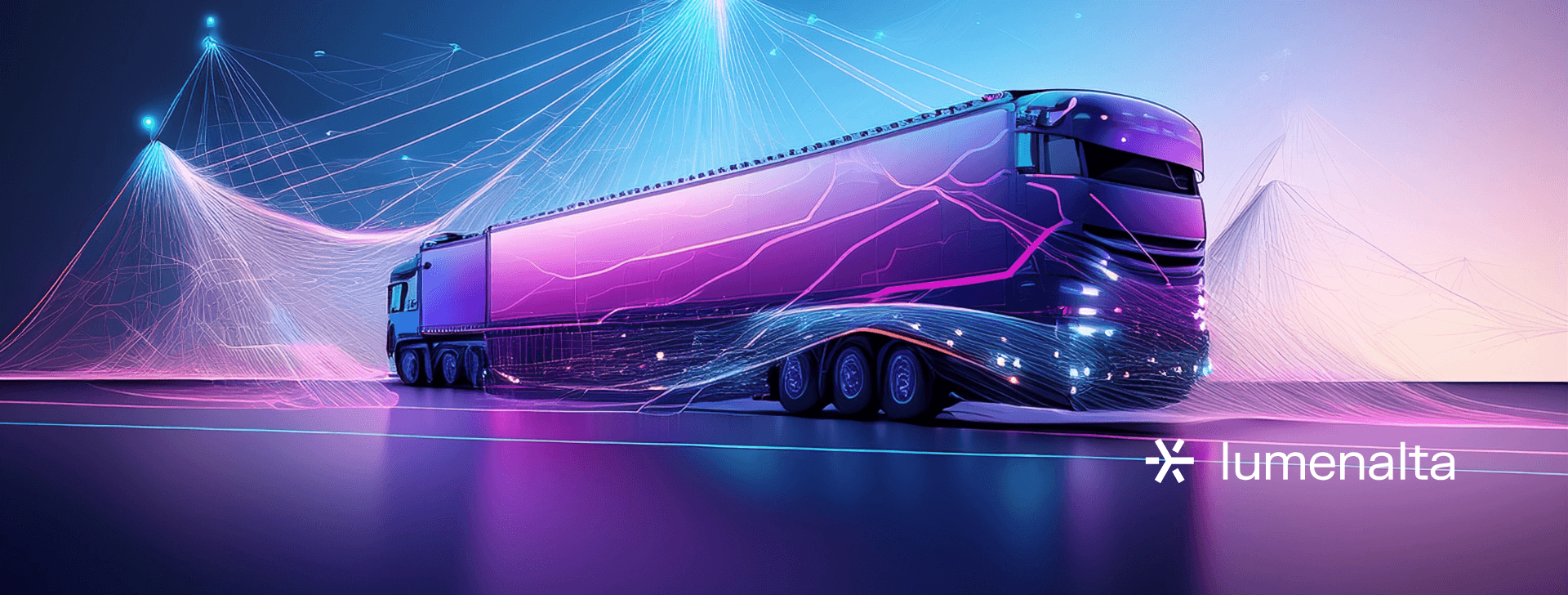

Sustainable freight is the secret to lower overhead, not higher
MAY. 15, 2025
2 Min Read
AI and cloud solutions empower freight providers to cut fuel consumption and emissions while maintaining cost-effective operations.
Legacy insurance IT systems aren’t just old software – they bleed money, slow down operations, and stifle innovation.
Rather than just avoiding fines, freight carriers that invest in sustainable practices reap savings through lower fuel use and improved process efficiency.
Integrating AI-driven efficiency solutions accelerates this shift in perception—sustainability moves from being a compliance box to tick into a core strategy for boosting performance. This mindset is changing. Optimizing routes, loads, and operations allows AI and cloud solutions to enable freight companies to meet green targets while improving efficiency and profitability.
Key takeaways
- 1. Sustainability in freight is now a strategic advantage – companies can reduce costs and even improve margins by going green.
- 2. AI-driven load planning minimizes empty miles and fuel waste, directly cutting both operational costs and carbon emissions.
- 3. Cloud-based routing gives real-time data and dynamic optimization, yielding faster deliveries and double-digit percentage cost savings.
- 4. Investing in green logistics technology often pays for itself – fuel savings and efficiency gains typically outweigh the initial costs.
- 5. AI and cloud enable freight carriers to meet environmental targets without sacrificing profitability, aligning sustainability with business success.
Sustainability as a freight advantage, not just compliance
Traditionally, meeting environmental regulations in trucking was viewed as a necessary expense that could hurt profit margins. However, industry data shows sustainability can be a financial win. In other words, what was once a compliance cost can become a competitive differentiator. Companies with high Environmental, Social, and Governance (ESG) scores often have operating margins up to 3.7× higher than less sustainable peers.
AI-powered load planning that cuts fuel usage and emissions
AI is transforming freight planning by eliminating one of the biggest inefficiencies: empty miles. A significant percentage of truck trips historically run empty, wasting fuel and generating needless emissions. AI algorithms change this by intelligently matching loads and optimizing routes so that each truck travels full as often as possible. An industry study found AI-driven logistics solutions can cut overall costs by up to 10% and emissions by 5%. This means smarter dispatching and load planning save fuel and reduce CO₂ without sacrificing service.
AI systems analyze fleet data to minimize trucks running empty. By filling backhauls and consolidating loads, AI ensures more trips carry revenue-generating cargo instead of air.
Modern AI platforms consider factors like shipment locations, delivery windows, and traffic in real time, then recommend the most efficient hauling plan. Specific benefits include:
- Smart load matching: Automatically pairing available trucks with shipments (including return loads) to reduce empty backhauls.
- Route optimization: Finding shortest, traffic-aware routes to eliminate unnecessary miles and fuel burn.
- Dynamic adjustments: Reallocating loads or altering routes on the fly when orders change or disruptions occur, keeping capacity use high.
- Demand forecasting: Predicting shipping volumes and lane imbalances to consolidate loads ahead of time.
- Capacity maximization: Packing loads by weight/volume so each truck runs at fuller capacity.
Each of these AI-driven tactics translates to fewer wasted miles and lower fuel expenses. For freight operators, this efficiency directly improves the bottom line while also cutting emissions. In short, AI load planning makes sustainability synonymous with operational efficiency.
Cloud-based approaches to optimize routing and reduce costs
Cloud logistics platforms bring all parties and data into one connected system, enabling unprecedented routing efficiency. By analyzing live information from drivers, traffic, and weather, cloud-based systems continuously refine routes to save time and fuel. Some shippers have reduced transportation costs by up to 66% using cloud-based transportation management systems, uncovering huge savings through better planning and coordination.
With a cloud platform, dispatchers and drivers share real-time visibility and updates, empowering swift responses to any situation. Key capabilities include:
Real-time tracking
Cloud platforms provide live GPS tracking of shipments. This transparency lets companies respond immediately to delays or changes. Real-time data means less buffer and idle time—if a delivery is ahead of schedule or traffic builds up, planners can adjust subsequent stops to keep trucks moving efficiently.
Predictive analytics
Cloud-based systems aggregate historical and current data to predict and prevent inefficiencies. For example, analytics might flag that a certain route tends to have afternoon congestion, prompting an earlier departure. Predictive models can also anticipate maintenance needs or suggest optimal fuel stops. Acting on these insights helps logistics teams reduce delays and avoid waste before it happens.
Dynamic re-routing
When unforeseen events occur—like road closures or sudden weather—cloud platforms automatically recalibrate routes and guide drivers to better alternatives. Dynamic re-routing minimizes detours and stops trucks from sitting in traffic jams, ensuring resources are still utilized fully despite disruptions.
Scalability
Because it’s cloud-based, the system scales effortlessly as operations grow. Adding new trucks, depots, or data streams doesn’t require huge IT investments. As business needs spike during peak seasons, the platform handles the surge and then scales down after, so you pay only for what you use. This delivers cost-effective growth and flexibility.
Leveraging these cloud capabilities allows freight companies to make their routing leaner and more adaptive. Every truck operates on the best possible route given current conditions, and the organization can respond instantly to change. The outcome is lower mileage, less fuel spent, and improved on-time performance—all contributing to cost savings and sustainability goals.

Meeting green targets while protecting profitability
The convergence of AI and cloud tech is proving that freight companies can hit environmental targets and improve profitability at the same time. Efficiency gains translate sustainability efforts into financial returns. 69% of CFOs expect higher returns from sustainability initiatives than from traditional investments. In logistics, this is visible in results: cutting fuel waste, optimizing routes, and automating processes all reduce operating costs.
Every gallon of diesel saved through AI-driven optimization is money back in the company’s pocket. Likewise, cloud-based coordination that eliminates delays and empty runs boosts asset utilization. By adopting AI and cloud solutions, freight businesses turn sustainability into a driver of profit. Meeting green targets doesn’t require sacrificing efficiency—if anything, it enhances it. The bottom line is clear: investing in sustainable freight technology is not just good for the planet, but also a smart, cost-effective business decision..
Table of contents
Common questions about ai in freight logistics
How can AI reduce fuel consumption in freight logistics?
What are the benefits of cloud-based routing in trucking?
Can sustainability in logistics actually save money?
How does load planning software improve sustainability?
Do AI and cloud solutions offer ROI for freight companies?
Break free from legacy system constraints and optimize your freight operations.




